The Ages of Mars
The inner Solar System is the home to the four terrestrial planets – Mercury, Venus, Earth and Mars. These small rocky worlds are thought to have been born in a disc of dust and gas that surrounded the Sun. As time went by, the dust grains snowballed into larger and larger rocks and boulders.
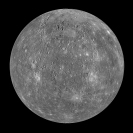 |
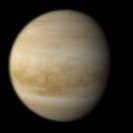 |
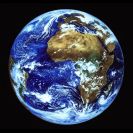 |
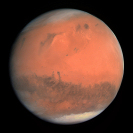 |
| Mercury | Venus | Earth | Mars |
About 4.5 billion years ago, the process of planet formation was more or less complete, as the fledgling planets mopped up any remaining smaller competitors. The terrestrial planets we see today are the survivors of a prolonged, chaotic period of colossal impacts which left their surface imprints in the form of giant basins and craters
How can we piece together a planet's history since its formation? On Earth, the geological timeline is quite easy to determine, since we can analyse the rocks and minerals in laboratories. On Mars, it is much more difficult to piece together the planet's history. With the exception of more than 120 Martian meteorites which have been discovered on Earth, there are no samples of materials from the Red Planet to study. (Limited rock and soil analysis has been undertaken by spacecraft and rovers that have landed on Mars in recent years, but no radiometric dating of the samples has been possible.)
Given the current lack of samples acquired from known locations on Mars, planetary scientists have to estimate the age of the surface by counting the number of visible craters: a higher number and density of craters indicates older terrain. Complications arise because Mars has experienced extensive volcanism, as well as erosion by glaciers, wind and running water, and widespread deposition of sediments that may bury older craters.
Based on the presence of the largest impact structures, the highest crater densities and the impact history of the inner Solar System, the southern highlands of Mars represent the oldest crust. They are believed to have formed prior to 3.8 billion years ago. The more sparsely cratered northern plains are younger, since they have fewer and smaller craters, having formed after the end of the great bombardment.
What's in a name? Noachian, Hesperian, and Amazonian
The geological history of Mars has been divided into three main periods, each named after a region of Mars: Noachian, Hesperian, and Amazonian. An earlier, Pre-Noachian, period has also been identified, even though no physical evidence for its existence remains. The dates and details of the story are continually being modified as new evidence is gathered.
Pre-Noachian (4.5 - 4.1 billion years ago)
Little is known about the earliest period of Martian history, which dates back to the formation of its crust some 4.5 billion years ago, but scientists think that the planet endured an extremely high rate of impacts.
This period seems to have seen the creation of the vast northern lowlands, now known as Vastitas Borealis. Mars has been a world of two halves ever since – the rugged southern highlands and the flat northern plains.
At the beginning of this period, the initial very dense atmosphere, which formed as a result of asteroid or comet impacts and outgassing of the planet's mantle, started to cool down. Eventually, the water vapour in the atmosphere would have condensed into a vast ocean, perhaps even a global ocean, that existed at high temperature – much like in a pressure cooker.
Slowly, this large body of water started to cool down, resulting in a first window for the possible emergence of life around 4.4 to 4.3 billion years ago. Since then, much of the atmosphere has escaped into space or become incorporated into the surface as the planet inexorably cooled.
Noachian (4.1 - 3.7 billion years ago)
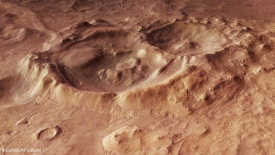 |
|
Craters within the Hellas Basin. Credit: ESA/DLR/FU Berlin, CC BY-SA 3.0 IGO |
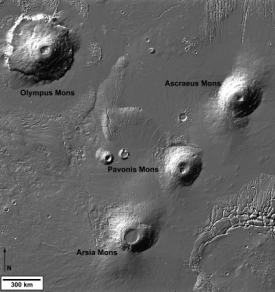 |
| Tharsis Montes trio and Olympus Mons. Credit: NASA |
The Noachian Period is named after Noachis Terra, an ancient highland region located between the huge Argyre and Hellas impact basins of the southern hemisphere.
This was still a period of heavy bombardment, with numerous asteroid and comet impacts. These created the Hellas, Isidis and Argyre basins, the largest impact structures still visible on the planet today, as well as many of the craters that pockmark the southern highlands.
At the same time, large-scale volcanic activity was taking place in the Tharsis region and parts of the highlands. The growth of the Tharsis bulge – home to Arsia Mons, Pavonis Mons and Ascraeus Mons, some of the largest volcanoes in the Solar System – coincided with widespread fracturing of the surface and the creation of the giant rift valley system known as Valles Marineris.
The volcanic eruptions poured ash and gases into the atmosphere. As the thicker blanket of air trapped more solar heat, the planet warmed. Clouds probably developed and precipitation rained to the ground. Many of the valley networks on Mars date from this period, and lakes seem to have formed in many basins and craters. There may even have been a shallow ocean covering at least part of the northern lowlands.
Surface rovers have found evidence to indicate that many rocks were chemically altered by periodic or prolonged exposure to non-acidic ground water. This led to the formation of clay minerals, known as phyllosilicates.
Meanwhile, as the interior of the planet cooled and its magnetic dynamo shut down, Mars no longer retained a global magnetic field.
Habitable environments gradually became smaller and more localised, but Noachian surface conditions continued to be favourable for the emergence of life.
Hesperian (3.7 - 2.9 billion years ago)
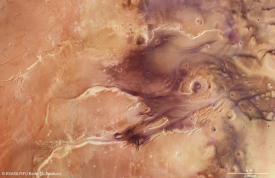 |
|
Kasei Valles mosaic. Credit: ESA/DLR/FU Berlin, CC BY-SA 3.0 IGO |
The Hesperian period, which lasted for about 800 million years, is named after Hesperia Planum, a region of ridged plains located north-east of the Hellas Planitia impact basin.
Impact cratering rates were significantly lower, compared to the Noachian period. Meanwhile, although there was still considerable volcanism, global geological activity was slowing down. Studies indicate that volcanic plains were widespread, particularly in the northern lowlands, with at least 30 per cent of Mars resurfaced during this period.
As huge amounts of sulphur dioxide and water were emitted by erupting volcanoes, the gases reacted to make sulphuric acid which then rained onto the surface. As a result, the Hesperian is characterised by extensive sulphate deposits, primarily in the Valles Marineris and Meridiani regions – evidence of chemical alteration of the rocks by acidic ground water.
Valley network formation waned as the climate became colder and much of the water probably became locked up as permafrost or subsurface ice. Despite plunging temperatures, ground ice and water that was pooled underground erupted onto the surface when heated by impacts, causing catastrophic floods that surged across vast stretches of the surface. These relatively short-lived flash floods unleashed torrents equivalent to thousands of Mississippi Rivers.
Such powerful, catastrophic releases of water led to the formation of huge outflow channels around the edge of Chryse Planitia and eastern Hellas Planitia, along with formation of so-called chaotic terrain and reshaping of the Valles Marineris system.
Amazonian (2.9 billion years ago to present)
The most recent period of Martian history is named after the smooth plains of Amazonis Planitia in the northern hemisphere. The Amazonian covers at least half of the planet's entire history, although the dating of the period is very uncertain: most estimates place its start date at about 2.9 billion years ago.
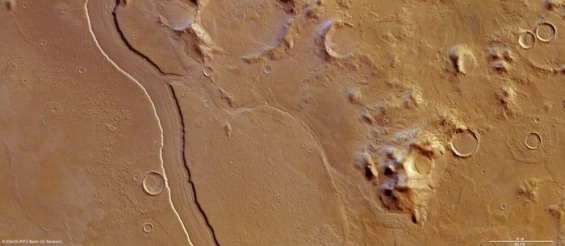 |
| Reull Vallis. Credit: ESA/DLR/FU Berlin, CC BY-SA 3.0 IGO |
The period is characterised by a relative absence of large-scale geological and climatic changes. For much of the period, the planet's surface has been dry and arid. The rocks have been slowly altered by weathering, punctuated only by occasional, short-lived, returns to warmer, wetter conditions.
The atmosphere became so thin that pure water vaporises instantly at the surface. However, the climate and perhaps the stability of water at the surface probably vary over thousands to millions of years as the axial tilt of the planet and its distance from the Sun undergo cyclical changes. At present, Mars seems to be coming out of an Ice Age, with evidence of melting polar ice caps.
The Amazonian period is generally defined by processes related to extensive resurfacing of the northern lowlands. Late-stage volcanism included eruptions on Olympus Mons and widespread lava flows elsewhere. Meanwhile, aeolian (wind) erosion and deposition shaped large areas of Mars, notably the broad plains and sand dunes near the poles, blanketing and destroying older terrains.
The Amazonian also shows outflow activity around the Chryse Planitia area. Evidence of glaciation and ice-related surface processes can be found near the dichotomy (highland-lowland) boundary escarpment, on the Tharsis volcanoes and the Hellas/Argyre Planitia regions.
Surface alteration by formation of anhydrous ferric oxides, led to the planet's characteristic red colour.
